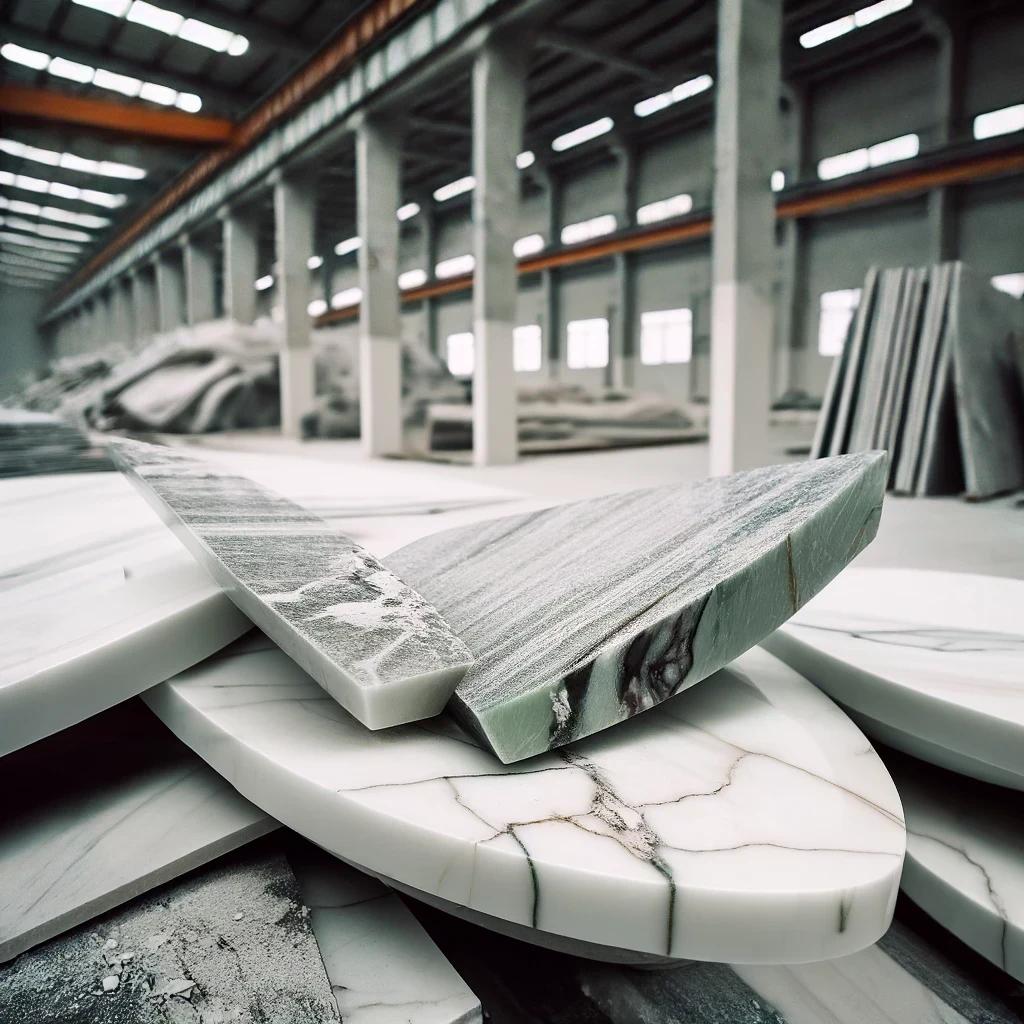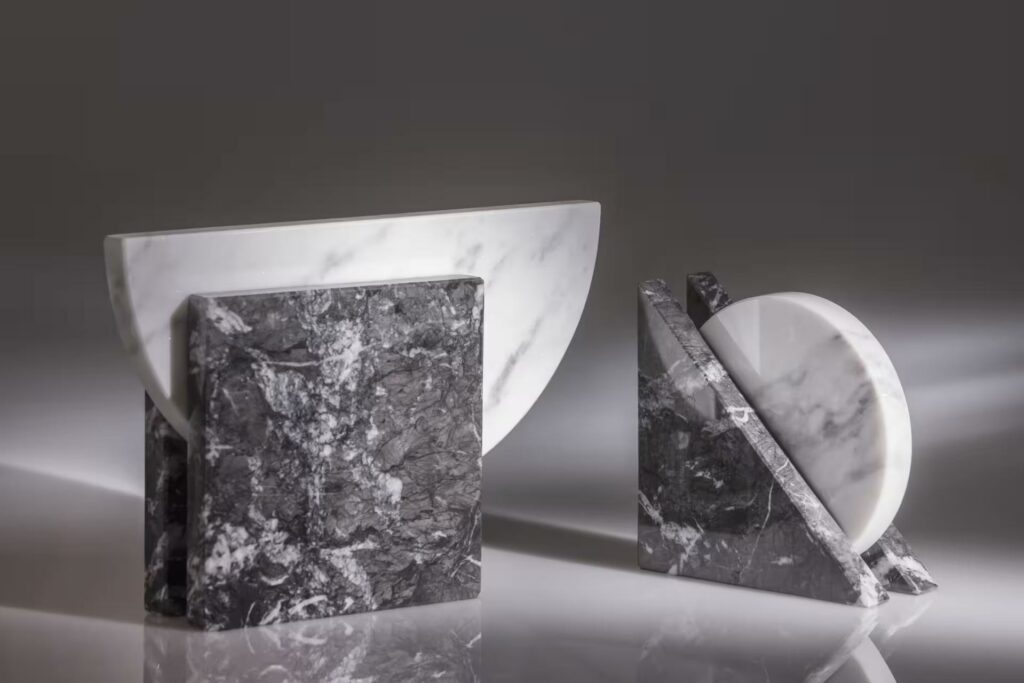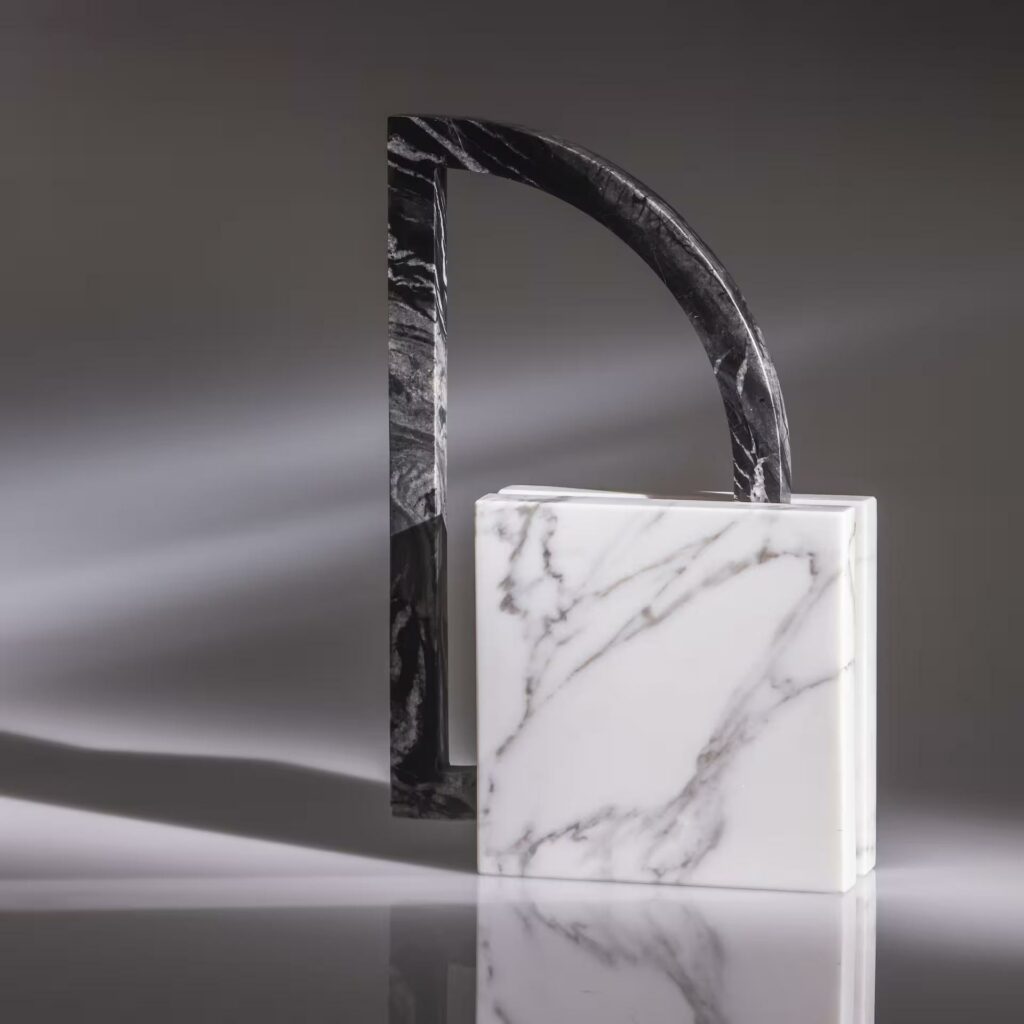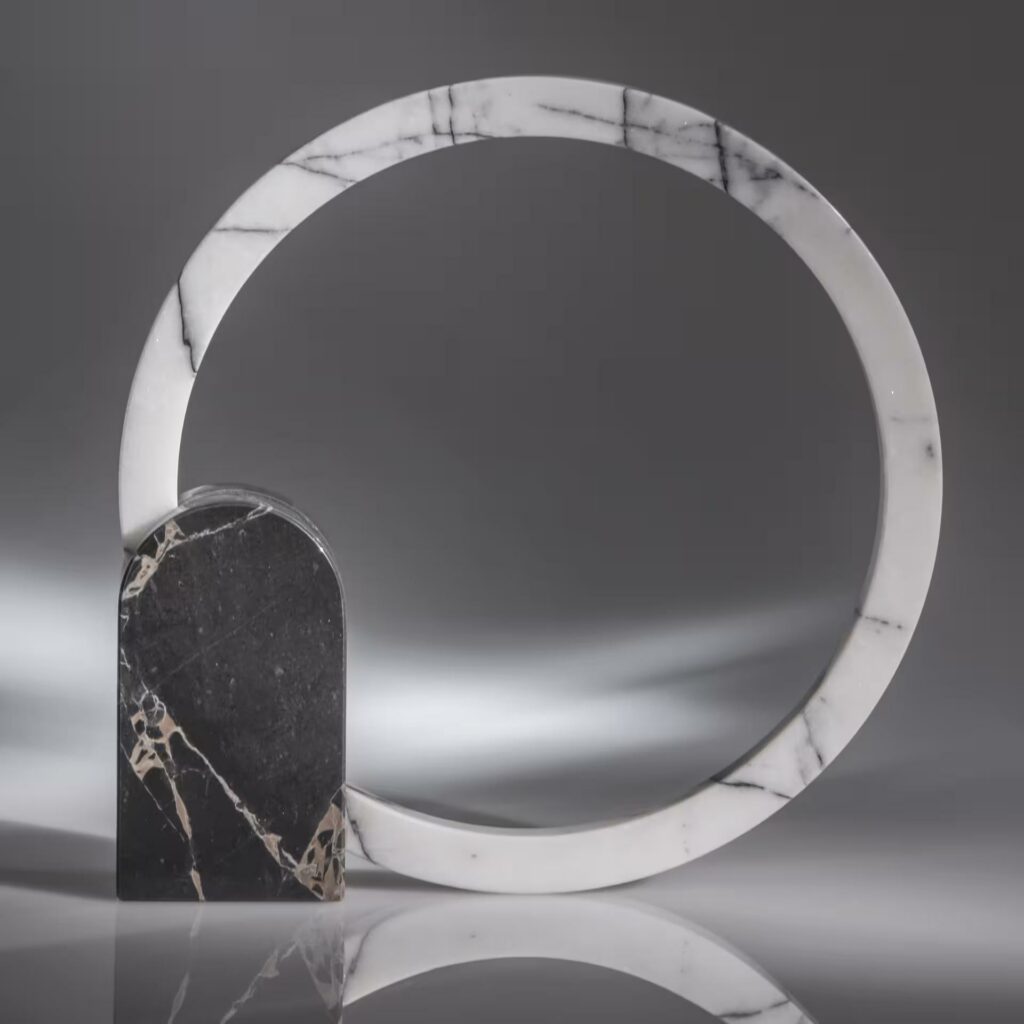The Hidden Value of Production Waste
Marble production exposes a striking paradox: during processing, up to 75% of the original material is discarded. From a 100kg block, only 25kg may become a finished product. For every marble masterpiece we admire, three times as much potential lies waiting to be discovered and valued. This once-overlooked material, considered a costly byproduct, is now revealing new opportunities.
Over time, industry professionals have categorized these remnants into distinct groups, each with specific qualities and uses:
- Large offcuts: substantial pieces from block and slab cutting that retain the nobility of the original material
- Medium fragments: pieces of medium size, versatile in application
- Shards: thin, irregular pieces perfect for creative compositions
- Dust particles: the finest form of marble, ready for surprising transformations.
These materials possess the same quality and intrinsic value as the finished product–same composition, same preciousness. For years, however, they were viewed solely as waste for disposal. What if we recognize them instead as valuable resources for new creations?

The Art of Finding Value Where Others See Waste
In Marmi Vrech's workshops, selecting materials is almost ritualistic. Each fragment is meticulously assessed, much like a jeweler inspecting a precious stone. Beyond technical quality, the focus is on unique veining patterns or textures that could become the centerpiece of a new project.
This process requires patience, expertise, and the sensitivity that only comes from generations of working with marble. It's not simply about material recovery—it's a genuine act of artistic curation.
Reworking reclaimed marble demands a particular sensitivity. Unlike untouched slabs, each fragment has already lived a first life, bearing the marks of previous cuts and processes that define its character and potential.
The journey begins with a careful assessment of internal stresses, continues with cutting techniques tailored to each piece, and culminates in the crucial polishing phase that enhances natural characteristics while preserving integrity.

DO-TOKI: When Reclaimed Marble Becomes Art
The DO-TOKI collection, born from collaboration with designer Nicola Mihailovic, perfectly embodies this creative recovery philosophy. Inspiration struck almost by chance during a workshop visit: observing piles of discarded material, the designers saw hidden potential in these fragments. The project's name—derived from the local dialect phrase "tochi de piera" (pieces of stone)—pays homage to artisanal roots and local heritage.
Each piece in the DO-TOKI collection combines two or three reclaimed marble elements at most, skillfully assembled into geometric compositions with minimalist, almost primal forms that celebrate the profound bond between humanity and raw materials. These pieces measure no more than 35x35 centimeters. This is not a limitation but a deliberate choice: compact dimensions allow exploration of pure form, creating dialogue between contemporary design rigor and material authenticity.

The process demands meticulous attention: each element undergoes careful selection and hand polishing to highlight the marble’s inherent beauty. Even the packaging reflects this commitment to sustainability: reclaimed wooden boxes from the wine industry, natural straw interiors, and cotton bags create packaging that stands as a manifesto of responsible design.
The Value of Uniqueness
One of the most captivating aspects of this collection is its inherent exclusivity. This is not a marketing strategy but a natural outcome of the creative process: the fragments originate from specific production runs that won't be repeated. When a particular marble block is cut to create, for example, yacht countertops, it produces a finite set of pieces with those exact veining patterns and textures. Once used, identical pieces cannot be found again.
This natural rarity makes each DO-TOKI piece a collector's item: not just a contemporary design element, but a unique and unrepeatable work, witnessing a production process that transforms limitations into opportunities.

A Vision for the Future
Projects like DO-TOKI demonstrate that regeneration in the production cycle is not just possible—it can become a powerful driver of creative innovation. What was once dismissed as waste now emerges as art, unlocking new possibilities that combine sustainability, design, and expert craftsmanship.
For Marmi Vrech, the DO-TOKI collection represents far more than a product line: it's definitive proof that circular economy principles can seamlessly integrate into the luxury sector.
In a time when environmental responsibility is paramount, true transformation begins with a cultural shift. It’s about redefining perceptions, seeing beauty where others see waste. This is the path to a future where luxury and responsibility can harmoniously coexist.













